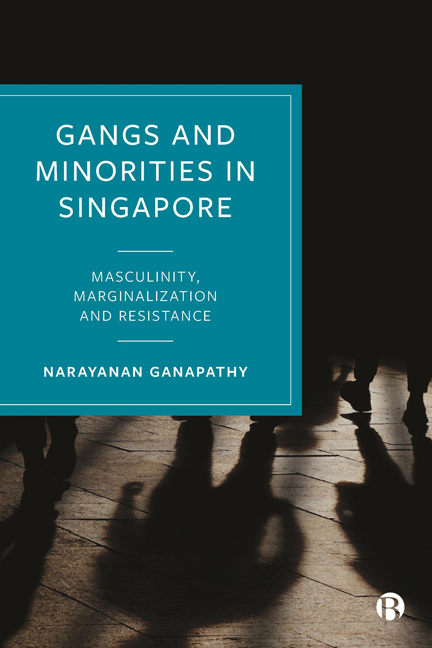Book contents
- Frontmatter
- Contents
- List of Figures
- List of Abbreviations
- Glossary of Non-English Terms
- About the Author
- Preface
- 1 Introduction: Framing the Study
- 2 Omega as Organized Crime?
- 3 Racial Minorities and Crime
- 4 Methods of Study
- 5 The Rise of Omega
- 6 Fearless and Fearsome
- 7 The Omega Wave: The ‘Triadization’ of Omega
- 8 Conclusion: Law, Drug Crimes and Marginality
- Notes
- References
- Index
5 - The Rise of Omega
Published online by Cambridge University Press: 28 March 2024
- Frontmatter
- Contents
- List of Figures
- List of Abbreviations
- Glossary of Non-English Terms
- About the Author
- Preface
- 1 Introduction: Framing the Study
- 2 Omega as Organized Crime?
- 3 Racial Minorities and Crime
- 4 Methods of Study
- 5 The Rise of Omega
- 6 Fearless and Fearsome
- 7 The Omega Wave: The ‘Triadization’ of Omega
- 8 Conclusion: Law, Drug Crimes and Marginality
- Notes
- References
- Index
Summary
Omega is a Malay sampan [a small wooden boat] in a Chinese sea, but it can make waves strong enough to make people fear …
Omega memberThe preceding description from an Omega member aptly captures the position of the gang vis-à-vis the Chinese secret societies as much as it contextualizes Omega’s genesis, expansion and consolidation from an informal prison group comprising Malay inmates to a transnational criminal enterprise. More importantly, the quote also attests to the racialized nature of gangs and organized crime in Singapore. Omega, a monoethnic gang formed in the late 1980s in prison and regarded as the most significant Malay secret society in post-independence Singapore, exists to safeguard and further the interests of Malay Muslim inmates against ‘infidels’, as an informant put it, comprising non-Malay as well as Malay Muslim gang members in Chinese gangs who are perceived to have compromised the welfare and rights of Malay Muslim prisoners. The Omega gang operates with strong racial and religious overtones, its primary objectives being the creation of a Muslim brotherhood in the criminal underworld by incorporating the Islamic doctrine of fisabilillah (for the sake of God) and staging a ‘counter-crusade particularly against the Malay Muslim members of Chinese secret societies’ (Ganapathy and Balachandran, 2019: 11). As an acronym, the word Omega has several meanings but two remain popular: ‘Our Men Establish the Greatest Association’ and ‘Orang Melayu Enter Gangster Area’, where the Malay words ‘Orang Melayu’ refer to ‘Malay people’. According to Kamaludeen (2016b: 953), ‘[t] he name makes reference to the spatial dynamics in gang membership, denoting an attempt by the Malays to gain a foothold in a domain already dominated by the Chinese’.
This chapter leverages on the context of a racialized postcolonial society and examines the emergence of Omega, exploring its members’ negotiation of their racial, religious, gendered and gang identities as they navigate the contours of racialization manifesting in complex and contradictory ways in prison. While the relevance of race affiliation among minority groups in particular has been noted in other prison contexts, its trajectory is different in Singapore (Pyrooz and Decker, 2011; Butler et al, 2018; Ganapathy and Balachandran, 2019). Racialized gangs have historically been entrenched in Singapore since the colonial period, not just in prisons but also on the streets, as seen in the case of the Chinese secret societies whose roots and subsequent institutionalization were discussed in Chapter 2 (see also Turnbull, 1996).
- Type
- Chapter
- Information
- Gangs and Minorities in SingaporeMasculinity, Marginalization and Resistance, pp. 81 - 110Publisher: Bristol University PressPrint publication year: 2023

